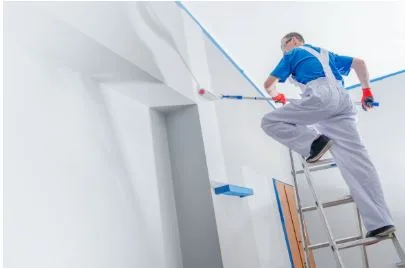Annapolis Hues: Elevating Annapolis Living with a Stroke of Genius
Annapolis, with its historic charm and picturesque waterfront, demands a level of aesthetic care that extends to every facade. When considering an enhancement to your home or business, the choice of professional Annapolis painting services isn’t merely about applying a fresh coat of color; it’s about investing in a meticulous craft that safeguards and beautifies your property for years to come. This comprehensive guide delves into the multifaceted world of professional painting, exploring the intricate processes, the hidden benefits, and what truly sets a premier service apart in this distinctive Maryland city.
The Foundation of Flawless Finishes: More Than Meets the Eye
Many might view painting as a straightforward task, but behind every pristine wall lies a rigorous process of preparation. This foundational work is the cornerstone of durability and aesthetic appeal. Without proper surface readying, even the highest quality paint will fail to perform to its potential, leading to premature peeling, cracking, or an uneven finish.
Surface Preparation: The Unsung Hero
- Inspection and Assessment: A thorough initial inspection identifies existing damage, mildew, loose paint, and other imperfections that need addressing. This step dictates the subsequent preparation methods.
- Cleaning: Surfaces are meticulously cleaned to remove dirt, grime, dust, and pollutants. Pressure washing, often with eco-friendly detergents, is a common technique for exterior surfaces, while interior walls may require hand-washing or specialized cleaners.
- Scraping and Sanding: Loose and flaking paint must be scraped away to create a smooth, stable base. Sanding follows to feather edges and create a uniform texture, promoting optimal adhesion for new coats.
- Repair Work: Cracks, holes, and imperfections in walls or trim are expertly patched and smoothed. For exterior surfaces, this might include wood rot repair or minor masonry touch-ups.
- Priming: A high-quality primer is essential. It seals porous surfaces, blocks stains, promotes adhesion of the topcoat, and ensures a consistent color application, especially when transitioning from dark to light hues. Different primers are used for different materials, such as wood, drywall, or metal.
Choosing the Right Palette: Color Consultation and Selection
The psychological impact of color is profound, influencing mood, perception of space, and even property value. Professional painting services often include expert color consultation to help clients navigate the vast spectrum of choices. This involves considering:
- Architectural Style: Complementing the existing design and era of the building.
- Lighting: How natural and artificial light will affect the chosen color throughout the day.
- Surrounding Environment: Integrating with landscaping, neighboring properties, and the natural Annapolis light.
- Personal Preference and Desired Mood: Achieving the client’s vision for the space.
- Durability and Finish: Selecting paints with appropriate sheens (flat, eggshell, satin, semi-gloss, high-gloss) for different areas based on traffic, humidity, and desired aesthetic.
Techniques and Tools of the Trade
- Brushing: Ideal for detailed work, cutting in edges, and intricate trim. Requires control and a steady hand.
- Rolling: Efficient for large, flat surfaces like walls and ceilings. Proper loading and consistent pressure are key to avoiding streaks and uneven coverage.
- Spraying: Provides the smoothest finish for large areas, complex surfaces, and certain types of siding. Requires significant skill to prevent overspray and achieve uniform coverage.
- Specialty Finishes: Techniques like faux painting, Venetian plaster, or accent walls require specialized knowledge and artistic flair to execute effectively.
Preserving Your Investment
- Weather Protection: Exterior paint shields surfaces from sun (UV radiation), rain, wind, and temperature fluctuations, preventing material degradation.
- Moisture Barrier: A well-applied paint job prevents moisture penetration, which can lead to wood rot, mold, mildew, and structural damage.
- Pest Deterrent: A smooth, sealed surface can make it more difficult for insects and pests to burrow into wood or siding.
- Enhanced Durability: High-quality paints are formulated to resist chipping, peeling, and fading, reducing the need for frequent repainting.
- Improved Air Quality: Modern low-VOC (Volatile Organic Compound) paints contribute to better indoor air quality, a significant health benefit.
The Professional Advantage
- Expertise and Experience: Years of experience mean professionals have encountered and successfully resolved a wide range of painting challenges.
- Efficiency: Professionals work quickly and efficiently, minimizing disruption to your daily life or business operations.
- Quality Materials and Tools: Access to and knowledge of the best paints, primers, and equipment ensures a superior result.
- Safety: Painting, especially exteriors, can involve working at heights and with various chemicals. Professionals are trained in safety protocols and have the necessary gear.
- Attention to Detail: From meticulous preparation to precise application and thorough cleanup, professionals exhibit an unparalleled attention to detail.
- Guaranteed Results: Reputable painting services often offer warranties or guarantees on their workmanship, providing peace of mind.
- Cost-Effectiveness in the Long Run: While the initial outlay may be higher than DIY, the longevity and quality of a professional job often lead to savings over time by avoiding frequent touch-ups or premature repainting.
Coastal Considerations
- Humidity and Salt Air: These elements can accelerate paint degradation. Professionals select paints specifically designed to withstand these conditions.
- Historic Preservation: For historic properties, painters must be knowledgeable about appropriate techniques, materials, and color palettes that respect the building’s heritage. This often involves working with historical societies or architectural review boards.
- Seasonal Fluctuations: Understanding the best times of year to paint in Annapolis, considering temperature and humidity for optimal drying and curing times.
Conclusion:
Engaging professional Annapolis painting services is an investment that transcends mere aesthetics. It’s about protecting your property, enhancing its value, and creating an environment that reflects quality and care. From the initial meticulous preparation to the final precise brushstroke, a true painting professional transforms your vision into a lasting reality, safeguarding your property’s integrity and beauty for years to come. For those seeking to preserve and enhance their property’s exterior, exploring resources on home maintenance can provide valuable insights into long-term care.
FAQ’s
Q1: How long does a professional exterior paint job typically last in Annapolis?
A1: The lifespan of an exterior paint job in Annapolis can vary based on factors like climate, paint quality, surface preparation, and exposure to sunlight. Generally, a high-quality professional job using premium paints can last anywhere from 7 to 15 years, and sometimes even longer with proper maintenance.
Q2: Are professional painting services in Annapolis insured and licensed?
A2: Reputable Annapolis painting services should always be fully licensed and insured. This protects both the homeowner and the painting crew in case of accidents or unforeseen issues during the project. Always ask for proof of licensure and insurance before hiring.
Q3: What kind of paint is best for homes in the Annapolis climate?
A3: For the Annapolis climate, which experiences humidity and temperature fluctuations, high-quality acrylic latex paints are often recommended for exteriors due to their flexibility, durability, and resistance to mildew and fading. For interiors, low-VOC (Volatile Organic Compound) acrylic latex paints are popular for their durability and better indoor air quality.
Q4: How do I choose the right colors for my Annapolis home, especially if it’s historic?
A4: Many professional Annapolis painting services offer color consultation. For historic homes, it’s often recommended to research historically accurate color palettes or consult with a preservation expert. Consider the home’s architectural style, natural light, and surrounding landscape.
Q5: What is the typical process for hiring a professional painter in Annapolis?
A5: The process usually involves getting detailed estimates from several reputable companies, checking their references and portfolios, verifying their insurance and licensing, and discussing the project scope, timeline, and payment terms. A clear contract outlining all aspects of the job is essential before work begins.






